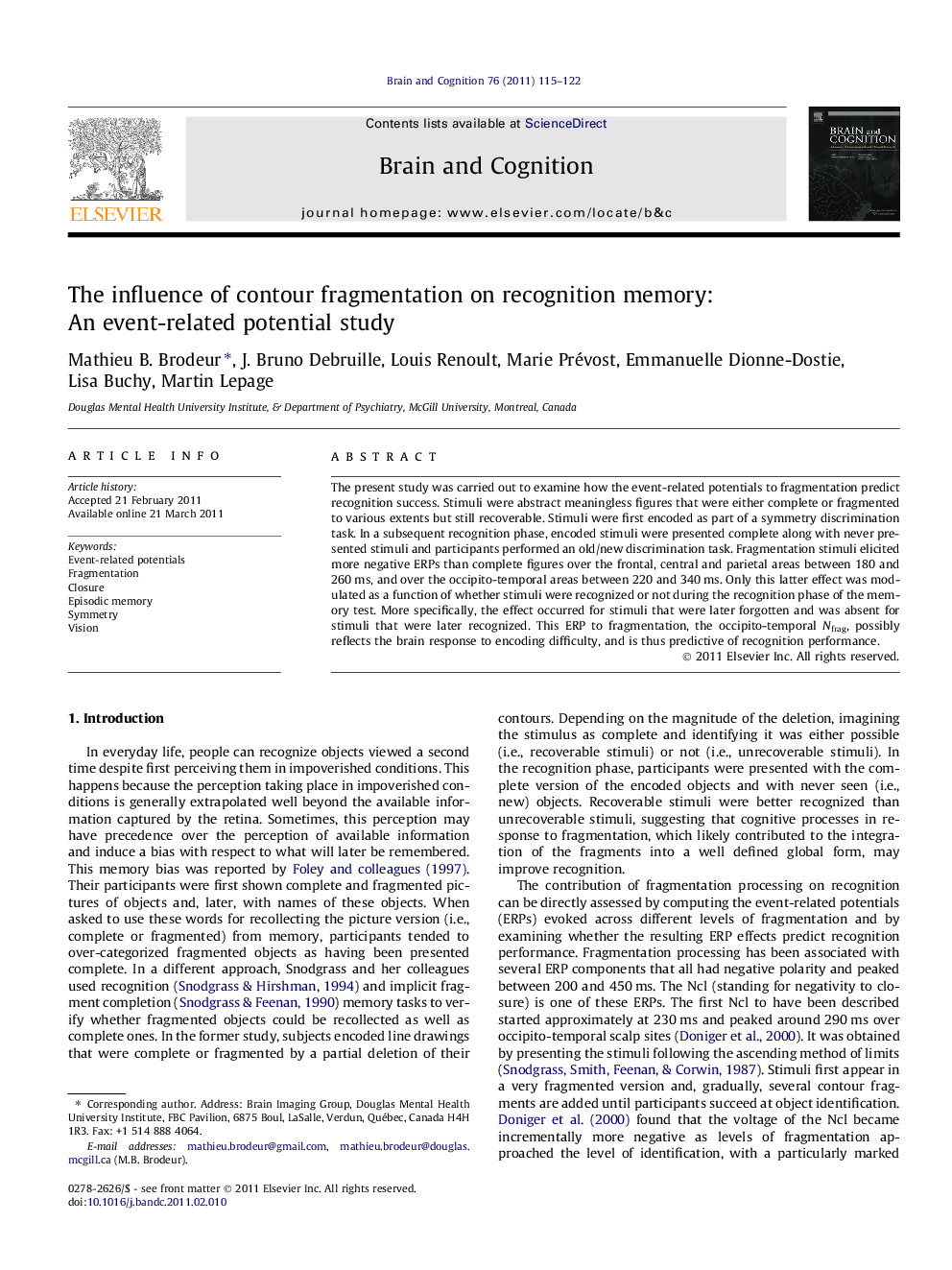| Article ID | Journal | Published Year | Pages | File Type |
|---|---|---|---|---|
| 924226 | Brain and Cognition | 2011 | 8 Pages |
The present study was carried out to examine how the event-related potentials to fragmentation predict recognition success. Stimuli were abstract meaningless figures that were either complete or fragmented to various extents but still recoverable. Stimuli were first encoded as part of a symmetry discrimination task. In a subsequent recognition phase, encoded stimuli were presented complete along with never presented stimuli and participants performed an old/new discrimination task. Fragmentation stimuli elicited more negative ERPs than complete figures over the frontal, central and parietal areas between 180 and 260 ms, and over the occipito-temporal areas between 220 and 340 ms. Only this latter effect was modulated as a function of whether stimuli were recognized or not during the recognition phase of the memory test. More specifically, the effect occurred for stimuli that were later forgotten and was absent for stimuli that were later recognized. This ERP to fragmentation, the occipito-temporal Nfrag, possibly reflects the brain response to encoding difficulty, and is thus predictive of recognition performance.
► We used ERPs to see how fragmentation of a figure’s contour influences its subsequent recognition. ► Greater ERPs to fragmentation were found with stimuli subsequently forgotten than recognized. ► Brain processing of fragmentation reflected by ERPs is predictive of subsequent recognition. ► This result shed lights on the functional significance of the ERPs associated with fragmentation.
